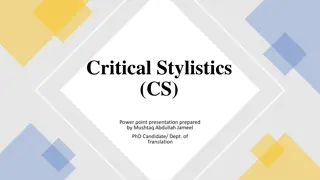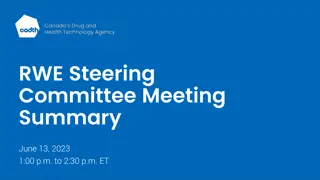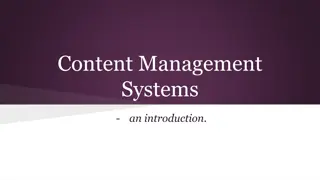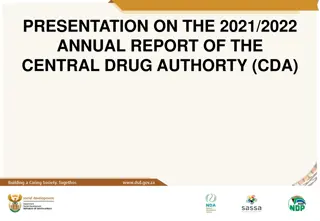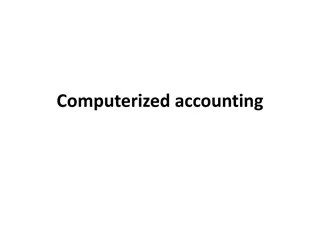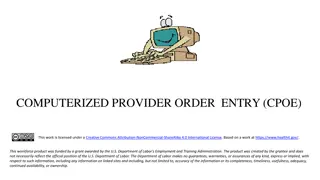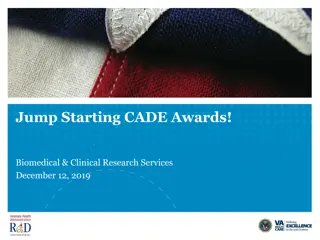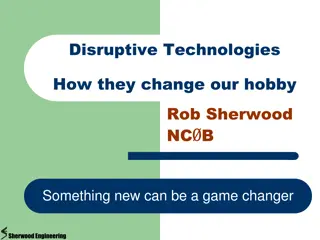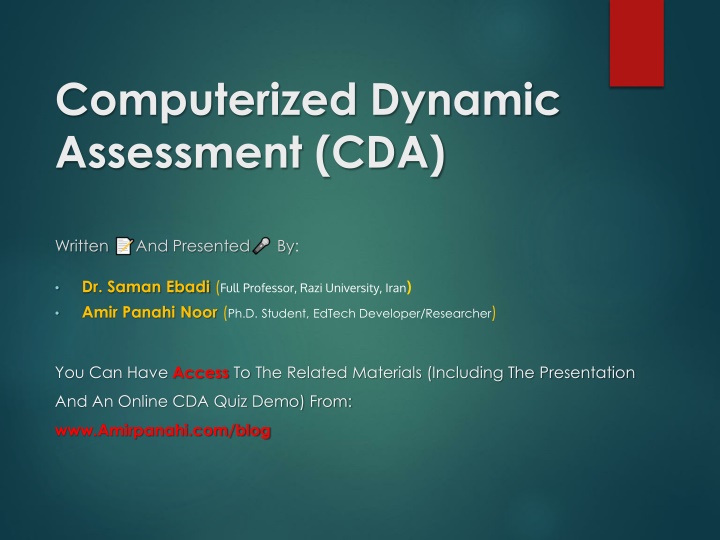
Computerized Dynamic Assessment (CDA) in Education
Explore the concept of Computerized Dynamic Assessment (CDA) integrating Vygotsky's Sociocultural Theory and the Zone of Proximal Development. Discover how CDA enhances the assessment and instructional processes, providing interactive feedback to support learners in reaching their potential through malleable abilities.
Download Presentation

Please find below an Image/Link to download the presentation.
The content on the website is provided AS IS for your information and personal use only. It may not be sold, licensed, or shared on other websites without obtaining consent from the author. If you encounter any issues during the download, it is possible that the publisher has removed the file from their server.
You are allowed to download the files provided on this website for personal or commercial use, subject to the condition that they are used lawfully. All files are the property of their respective owners.
The content on the website is provided AS IS for your information and personal use only. It may not be sold, licensed, or shared on other websites without obtaining consent from the author.
E N D
Presentation Transcript
Computerized Dynamic Assessment (CDA) Written And Presented By: Dr. Saman Ebadi (Full Professor, Razi University, Iran) Amir Panahi Noor (Ph.D. Student, EdTech Developer/Researcher) You Can Have Access To The Related Materials (Including The Presentation And An Online CDA Quiz Demo) From: www.Amirpanahi.com/blog
Introduction Computerized Dynamic Assessment (CDA) integrates Vygotsky s Sociocultural Theory (SCT) and the Zone of Proximal Development (ZPD) into technology-driven assessment frameworks. CDA serves as both an instructional and evaluative tool, blending real-time mediation with testing to promote learners cognitive and linguistic development. DA represents a shift towards viewing assessment and instruction as unified and integrated processes Unlike traditional static assessments, CDA provides interactive and adaptive feedback, ensuring that learning is scaffolded effectively to help learners reach their potential.
Introduction It aims to help learners move beyond their current level of independent functioning by offering needs-sensitized mediation. The focus is on understanding not only what learners can do independently but also their responsiveness to various forms of support (mediation). DA considers abilities to be malleable and flexible rather than fixed.
Theoretical Background CDA is rooted in Vygotsky s Sociocultural Theory, which posits that cognition is socially mediated. o Key concepts include: Mediation interactions with more knowledgeable others or artifacts. Zone of Proximal Development (ZPD) what a learner can do independently and what they can achieve with guidance. Internalization & Self-Regulation gradually appropriate knowledge and become autonomous. Collaborative Learning : The role of social interactions in fostering knowledge construction. Cognitive Modifiability : Feuerstein s concept that intelligence is not fixed and can be developed through appropriate mediation. : Cognitive development occurs through o : The difference between o : The process by which learners o o o
Types of Dynamic Assessment (DA) DA is classified into two main approaches: 1. **Interventionist DA** Utilizes pre-specified hints and prompts. Mediation is standardized and systematically provided. Example: Software-driven DA where students receive pre-coded feedback. More structured and aligned with traditional assessment methods. 2. **Interactionist DA** Open-ended mediation tailored to individual learners needs. Dynamic, responsive, and dialogic interaction. Example: Google Docs-based writing assessments where mediation evolves based on student responses. Allows for greater flexibility and individualized learning trajectories.
Advantages of CDA Scalability simultaneously. : Can assess a large number of learners Real-Time Mediation hints. : Immediate feedback and tailored Data Tracking progression. : Enables microgenetic analysis of learner Personalized Learning Paths learner performance. : Adjusts difficulty based on Consistency & Standardization assessment. : Reduces human biases in Multimodal Integration video for diverse learning styles. : Can incorporate text, audio, and To try a CDA quiz go to amirpanahi.com/cda
Challenges of CDA Design Complexity hints, prompts, and mediation strategies. : Requires careful structuring of o Lack of Human Interaction learner responses. : May miss nuances in o Technical Constraints stability and user accessibility. : Dependence on software o Training Requirements trained to effectively implement CDA tools. : Educators need to be o
Key Components of CDA Implementation Mediation Typologies: 1. Awareness Raising Using collaborative frames and automated tools. 2. Problem Identification Highlighting and pinpointing errors. 3. Choice Offering Providing multiple options for correction. 4. Justification of Response Encouraging learners to explain corrections. 5. Scaffolded Feedback Gradual removal of mediation as learners gain independence. 6. Cognitive Coaching Promoting metacognitive strategies to enhance self-regulation.
Data Collection and Analysis in CDA Microgenetic Analysis: Tracks moment-to-moment cognitive changes. Thematic Analysis: Identifies emerging patterns in mediation and reciprocity. Triangulation: Uses multiple data sources (e.g., transcripts, test scores, interviews) for validation. Quantitative Analysis: Measures learning gains through pre-test/post-test comparisons. AI-Assisted Insights: Leveraging machine learning for adaptive feedback refinement.
Conclusions & Implications - CDA provides a **holistic** and **adaptive** assessment model that enhances learning outcomes. - Further research should explore **AI-driven mediation** and **multimodal CDA applications**. - Educators must balance **automated assessment tools** with **human interaction** to maximize efficacy. - CDA should be integrated into formal educational systems to enhance assessment validity. - Ethicalconsiderations in CDA must be addressed, particularly regarding data privacy.
Future Directions Development of AI-powered CDA systems. Integration of multimodal feedback (e.g., video- based mediation). Expansion of CDA in different linguistic and cognitive skill areas. Research on long-term efficacy and sustainability of CDA practices. Collaboration between technology developers and educators to refine CDA methodologies.



